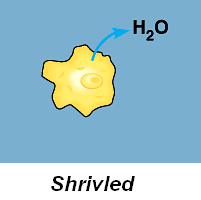Biology Definition, Importance, & Fundamental Concepts: A Complete Guide with Real-World Relevance
Lesson Overview
Biology is the scientific study of living things, their structures, functions, growth, evolution, and interactions within their environments. Students exploring biology learn about how organisms live, adapt, and interact. This lesson provides an extensive understanding of foundational biology concepts necessary for Grade 5 students.

What Are the Cells?
Cells form the basic unit of life, performing all necessary life processes. Every organism, from the simplest bacteria to the most complex animals, consists of cells.
Cell Types
Cells divide into two main categories: prokaryotic and eukaryotic.
Prokaryotic Cells
Prokaryotic cells lack a distinct nucleus and membrane-bound organelles. They are simpler and usually smaller than eukaryotic cells.
- Example: Bacteria
Eukaryotic Cells
Eukaryotic cells contain a nucleus that houses genetic material and numerous specialized organelles, making them more complex.
- Examples: Plant cells, animal cells, fungi cells
Cell Structures and Functions
Each cell has specialized structures called organelles, which are responsible for specific tasks essential for cell survival.
| Organelle | Function |
| Nucleus | Controls cell activities and stores genetic material (DNA) |
| Mitochondria | Produces energy through respiration, known as the powerhouse of the cell |
| Ribosomes | Synthesizes proteins |
| Endoplasmic Reticulum (ER) | Transports proteins and other materials |
| Golgi Apparatus | Packages and distributes proteins |
| Vacuole | Stores nutrients, water, and waste products |
| Lysosomes | Breaks down and recycles cellular waste |
| Cell Membrane | Regulates entry and exit of substances |
| Chloroplasts (in plants) | Performs photosynthesis, converting sunlight into energy |
Cell Theory
Cell theory forms the basis of biology, comprising three main ideas:
- All living organisms consist of one or more cells.
- Cells are the basic units of life.
- New cells arise from pre-existing cells.
Living Organisms and Their Classifications
Let's understand the living organisms and their classifications:
Unicellular Organisms
Unicellular organisms consist of a single cell capable of carrying out all necessary functions.
- Examples: Amoeba, bacteria
Multicellular Organisms
Multicellular organisms contain numerous specialized cells that work together.
- Examples: Humans, plants, animals
Importance of Cellular Specialization
Specialized cells in multicellular organisms perform specific tasks. Cellular specialization enhances efficiency, as each cell performs a particular function effectively.
- Examples: Muscle cells provide movement, nerve cells transmit signals, and red blood cells transport oxygen.
Take This Quiz
What Are the Biological Processes in Cells?
Let's understand the biological processes in cells:
Photosynthesis
Photosynthesis is a process that plants use to convert sunlight, water, and carbon dioxide into glucose (sugar) and oxygen.
- Equation: Carbon dioxide + water + sunlight → glucose + oxygen
Cellular Respiration
Cellular respiration involves breaking down glucose to release energy required for cell functions.
- Equation: Glucose + oxygen → carbon dioxide + water + energy
Osmosis and Diffusion
- Diffusion: Molecules moving from an area of higher concentration to a lower concentration.
- Osmosis: A specific type of diffusion involving the movement of water through a selectively permeable membrane.
Endocytosis and Exocytosis
- Endocytosis: Process cells use to ingest large molecules or particles.
- Exocytosis: Process cells use to expel materials outside the cell.
Organ Systems and Their Functions
The body has organ systems composed of organs that work together to perform essential bodily functions.
Major Organ Systems
- Circulatory System: Transports blood, nutrients, oxygen, and wastes.
- Respiratory System: Facilitates breathing and gas exchange.
- Digestive System: Breaks down food for nutrient absorption.
- Muscular System: Enables movement.
- Skeletal System: Provides structure and protection and supports movement.
- Nervous System: Controls body activities through electrical signals.
Importance of Organ System Interactions
Organ systems cooperate to maintain homeostasis, a balanced internal environment essential for survival.
Adaptation and Evolution
Adaptation refers to features or behaviors that organisms develop to survive better in their environments. Evolution is the gradual process of change in organisms over generations.
Types of Adaptations
- Structural Adaptations are physical characteristics such as the thick fur of polar bears.
- Behavioral Adaptations: Actions animals perform, like bird migration.
Importance of Adaptations
Adaptations increase organisms' chances of survival and reproduction.
Ecosystems and Environmental Interactions
An ecosystem includes all living organisms and non-living factors interacting within a specific environment.
Components of an Ecosystem
- Biotic Factors are living things such as plants, animals, and bacteria.
- Abiotic Factors: Non-living components like water, sunlight, and soil.
Food Chains and Food Webs
- Food Chain: A Sequence showing how energy transfers from producers to consumers.
- Food Web: A Complex network showing interconnected food chains.
Importance of Ecosystem Balance
Maintaining ecosystem balance is critical for the survival of all organisms within it.
Take This Quiz
Rate this lesson:
 Back to top
Back to top

